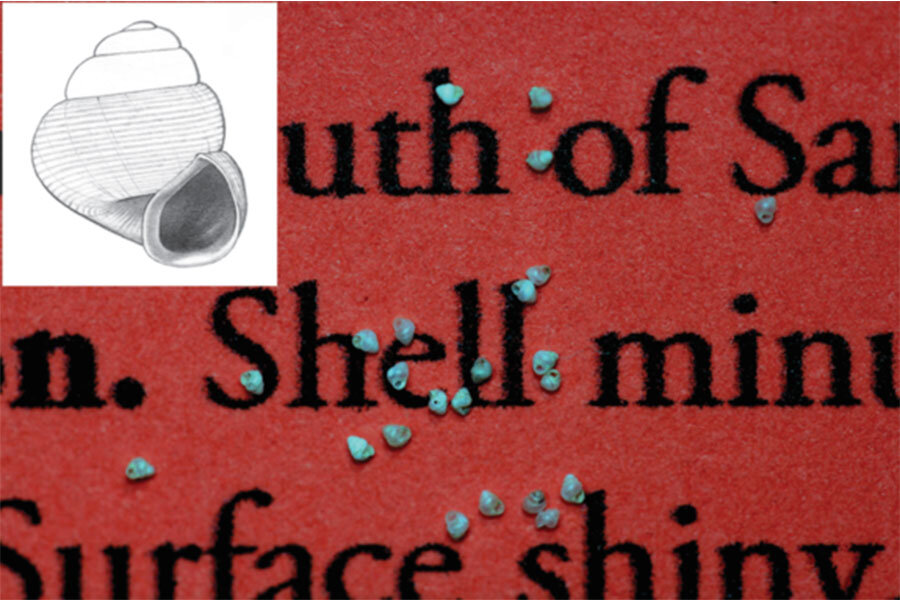World's smallest snail: A tiny mollusk with a 0.7 mm tall home
You had a good run, Angustopila dominikae. But, as of Monday, the title of "World's Tiniest Snail" goes to Acmella nana, a mollusk whose 0.7 millimeter existence was announced in a study published in ZooKeys, an open-access biodiversity journal.
It was a close race: Acmella nana, whose species name is Latin for 'dwarf,' beat out the former record-holder, a Chinese mollusk, by a tenth of a millimeter, according to LiveScience.
Finding a snail too small to see with the naked eye takes some elbow grease, as well as microscopes. Menno Schilthuizen, of the Netherlands' Leiden University, told LiveScience that he and his co-researchers headed to the limestone hills of Borneo, loaded up bags with as much soil as possible, and carted them back to the lab, where they found snail shells by sifting out larger chunks and submersing the rest in water. Thanks to air trapped inside, the shells will float.
The island of Borneo, which is divided between Malaysia, Brunei, and Indonesia, is a hot-spot for mollusks due to rich stores of limestone, whose calcium carbonate is also found in snail shells.
"You can sometimes get thousands or tens of thousands of shells from a few liters of soil, including these very tiny ones," Dr. Schilthuizen said. The research team wasn't disappointed: they found 48 new species, and recategorized several more, based on their shells. The Acmella nana's, for instance, is described as spiral-shaped, shiny, and translucent.
Snails may have a bad rap, or, at best, not much of one: they're small, they're sticky, and sometimes they're even invasive: Florida is currently fighting off the African giant land snail.
But the diversity of snails in Borneo highlights their importance as a barometer of environmental health.
Because of their famously slow speed, snails don't travel far in life, meaning that distinct species can evolve in specific, small locales. Diplommatina tylocheilos, for example, only lives at the mouth of a particular cave on a particular mountain in Malaysia, as Pensoft Publishers reports.
That makes conservation all the more urgent for the earth's snails: even a relatively small swath of destruction could wipe out numerous species. Researchers worry that extinction is not far off for some of the limestone-loving species: their home are often torn apart by cement quarries. And a decrease in snail health also means a decrease in soil health.
Meanwhile, world's-tiniest Acmella nana should enjoy its 15 minutes of fame: it only took one month to unseat the last record-holder.







